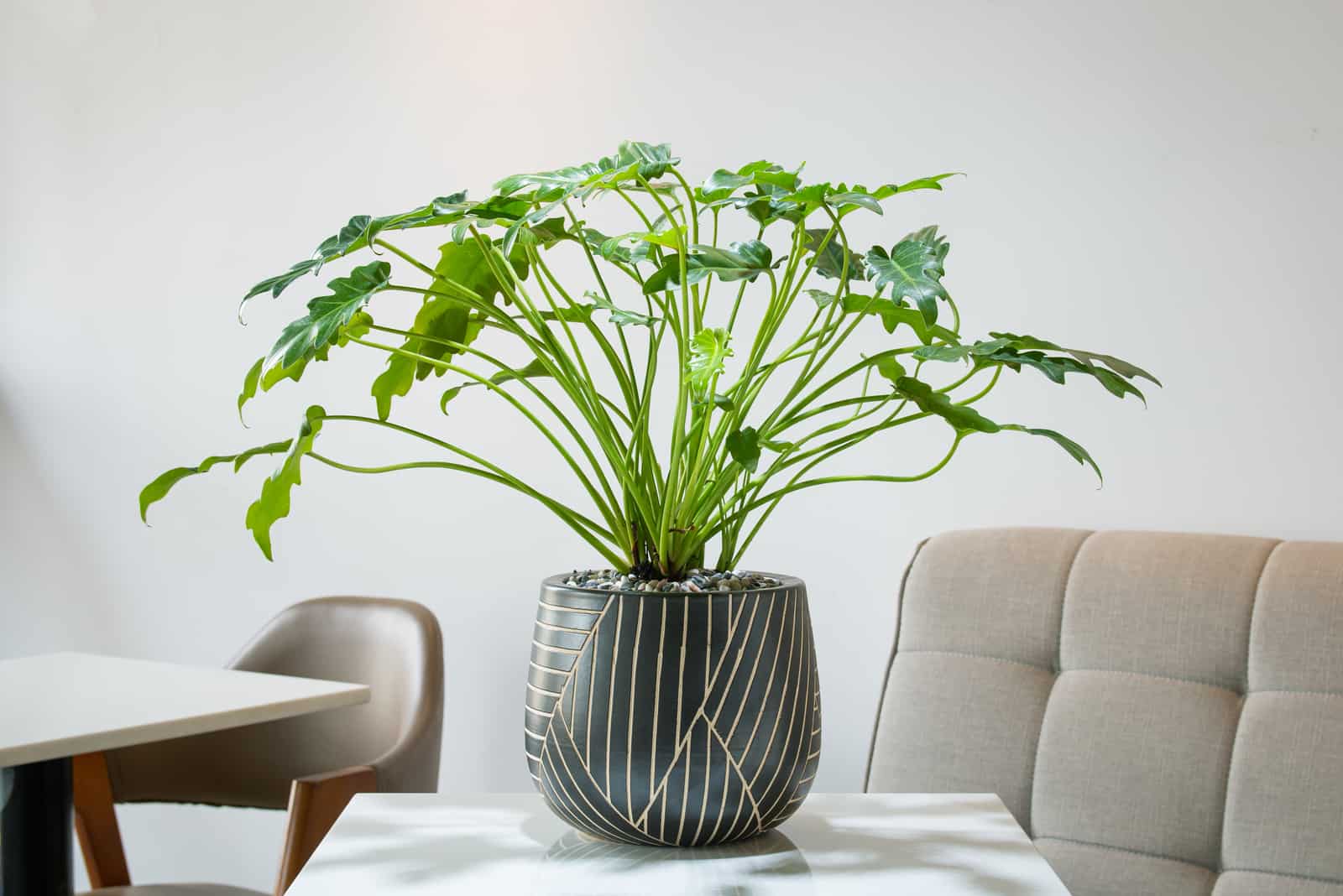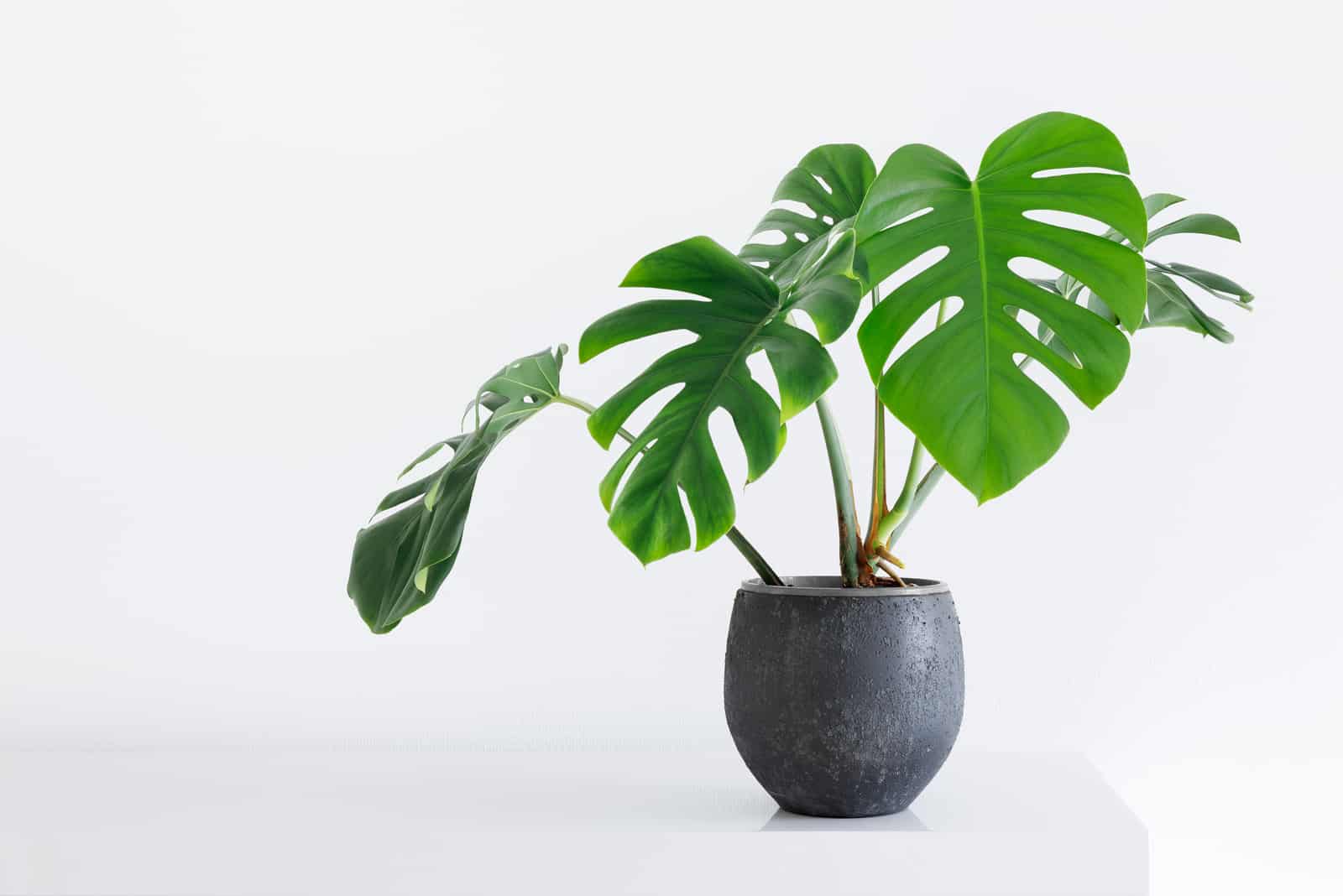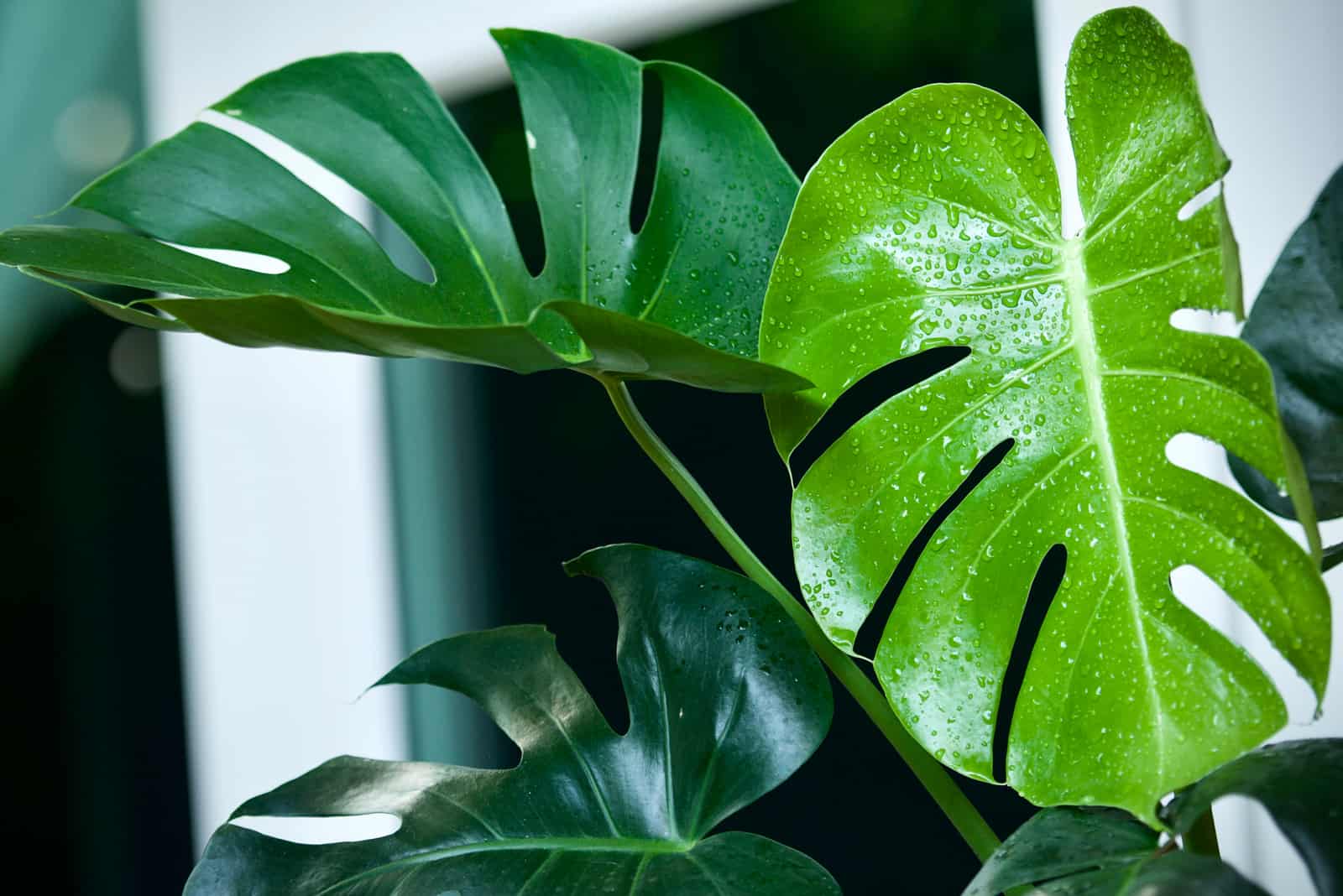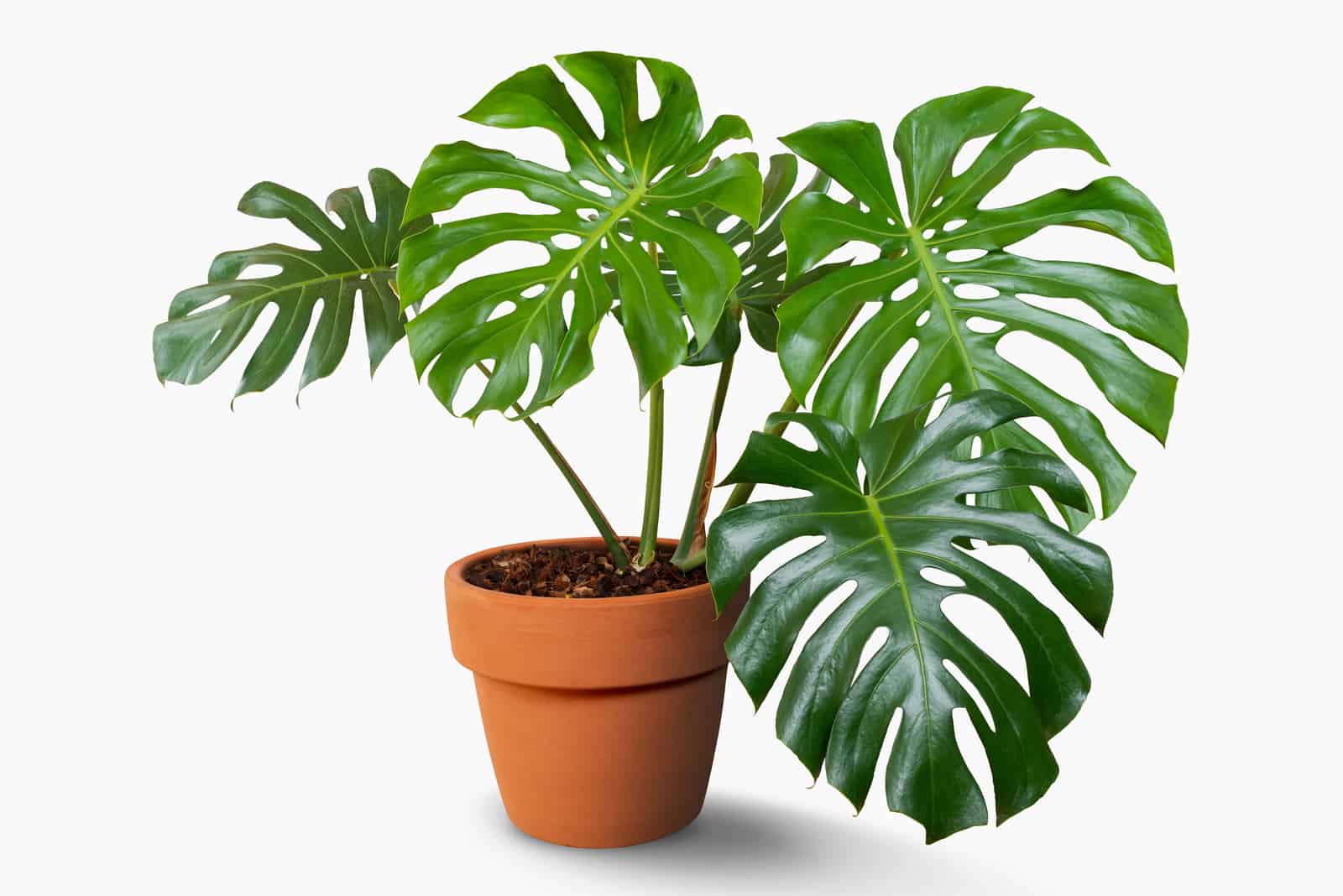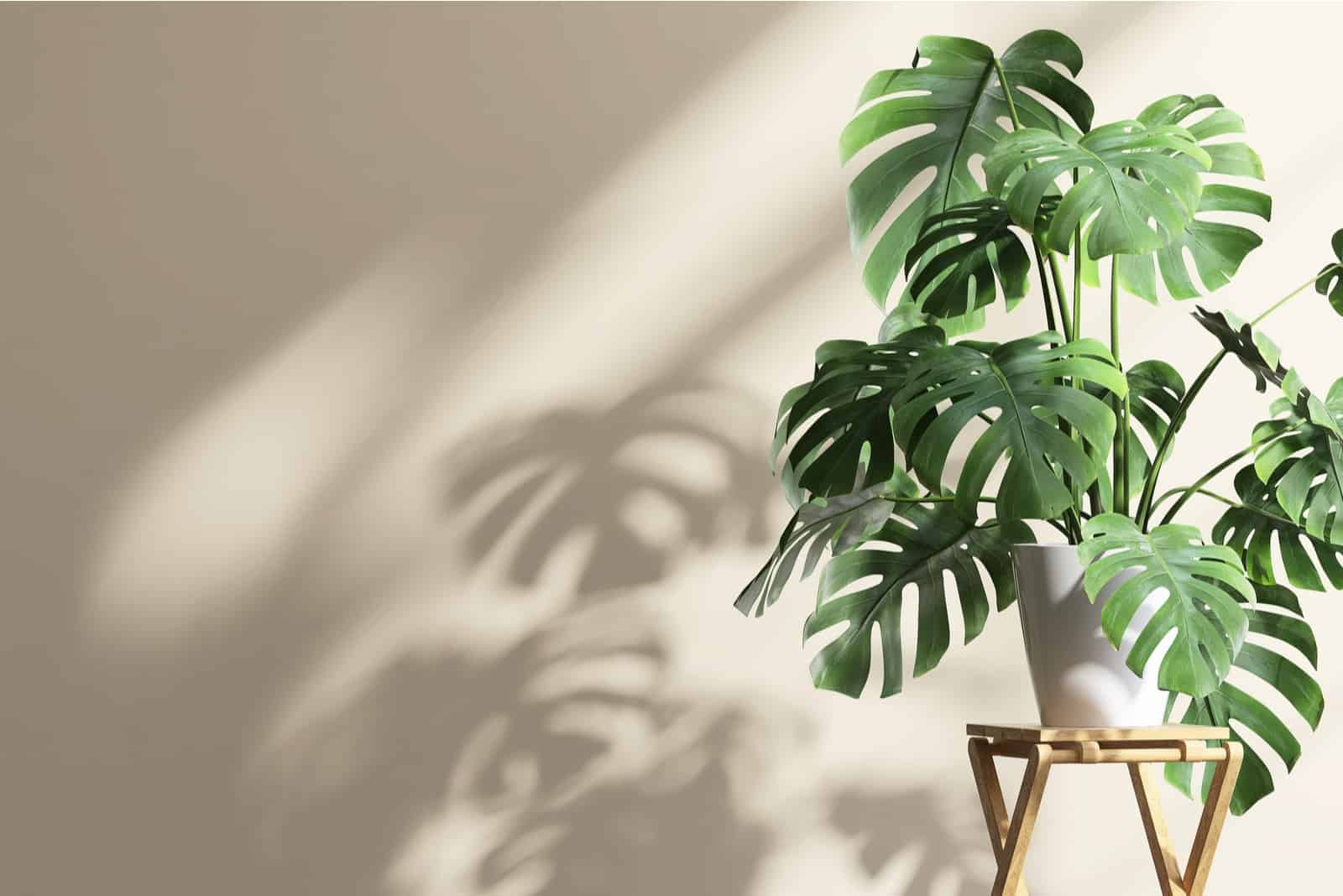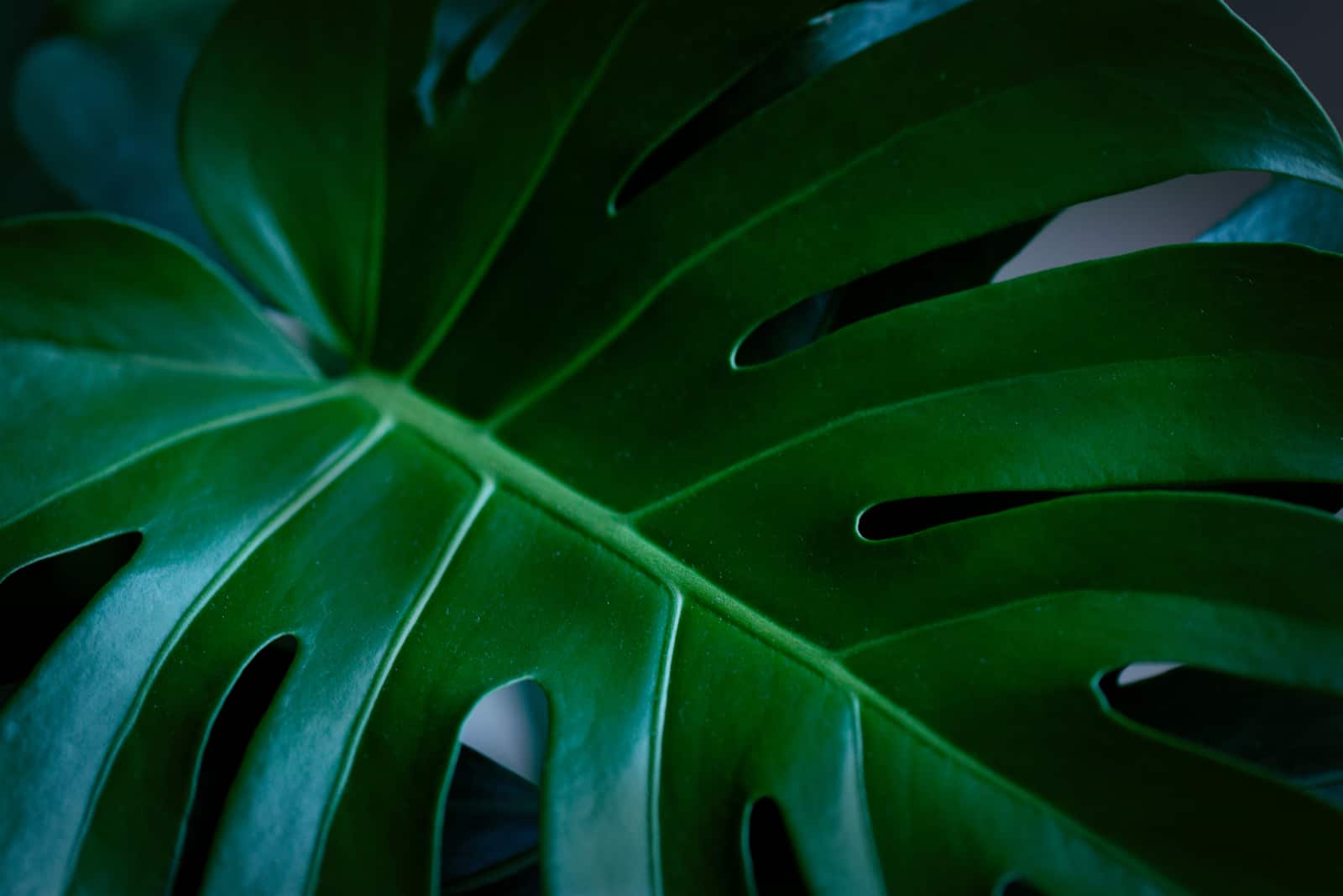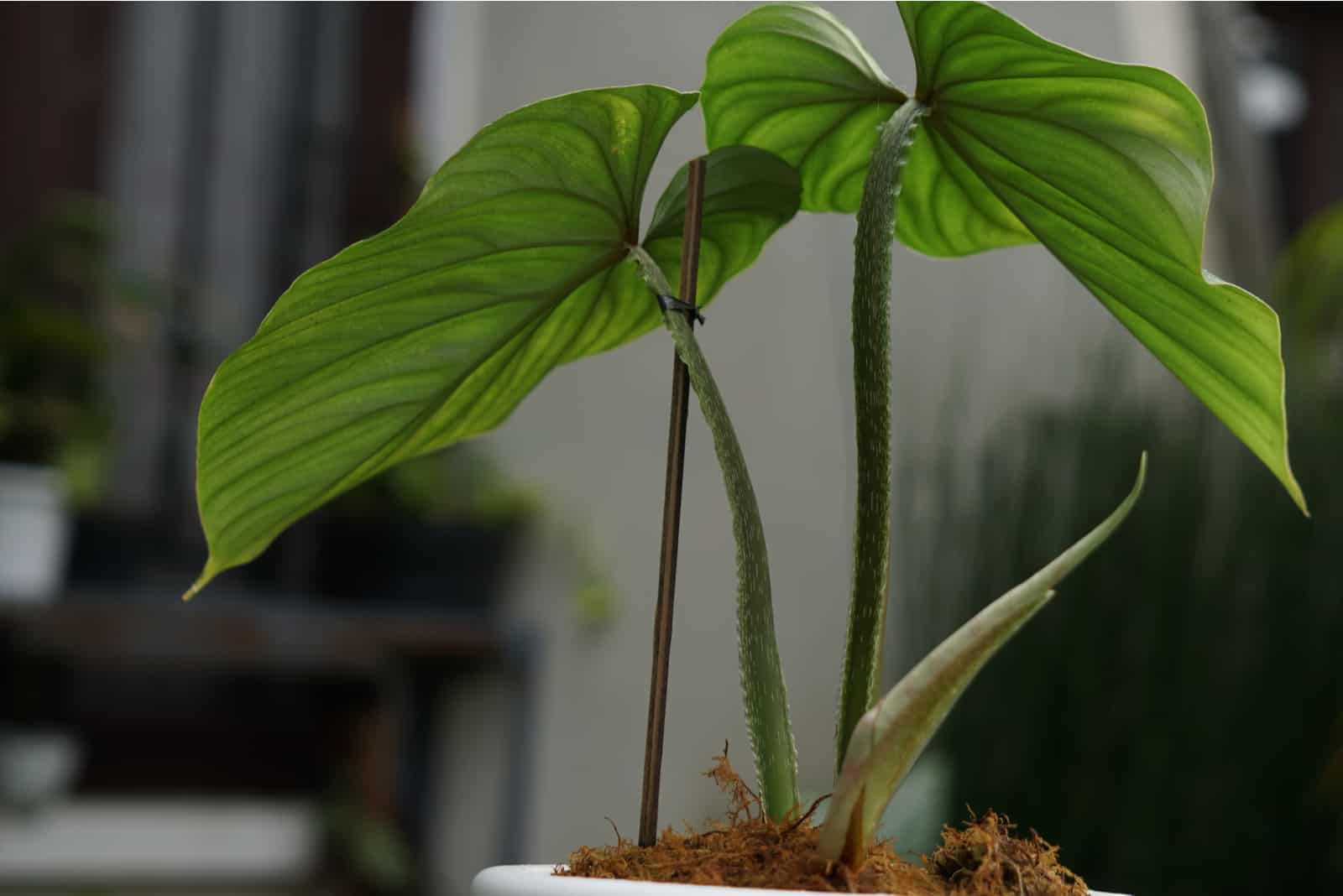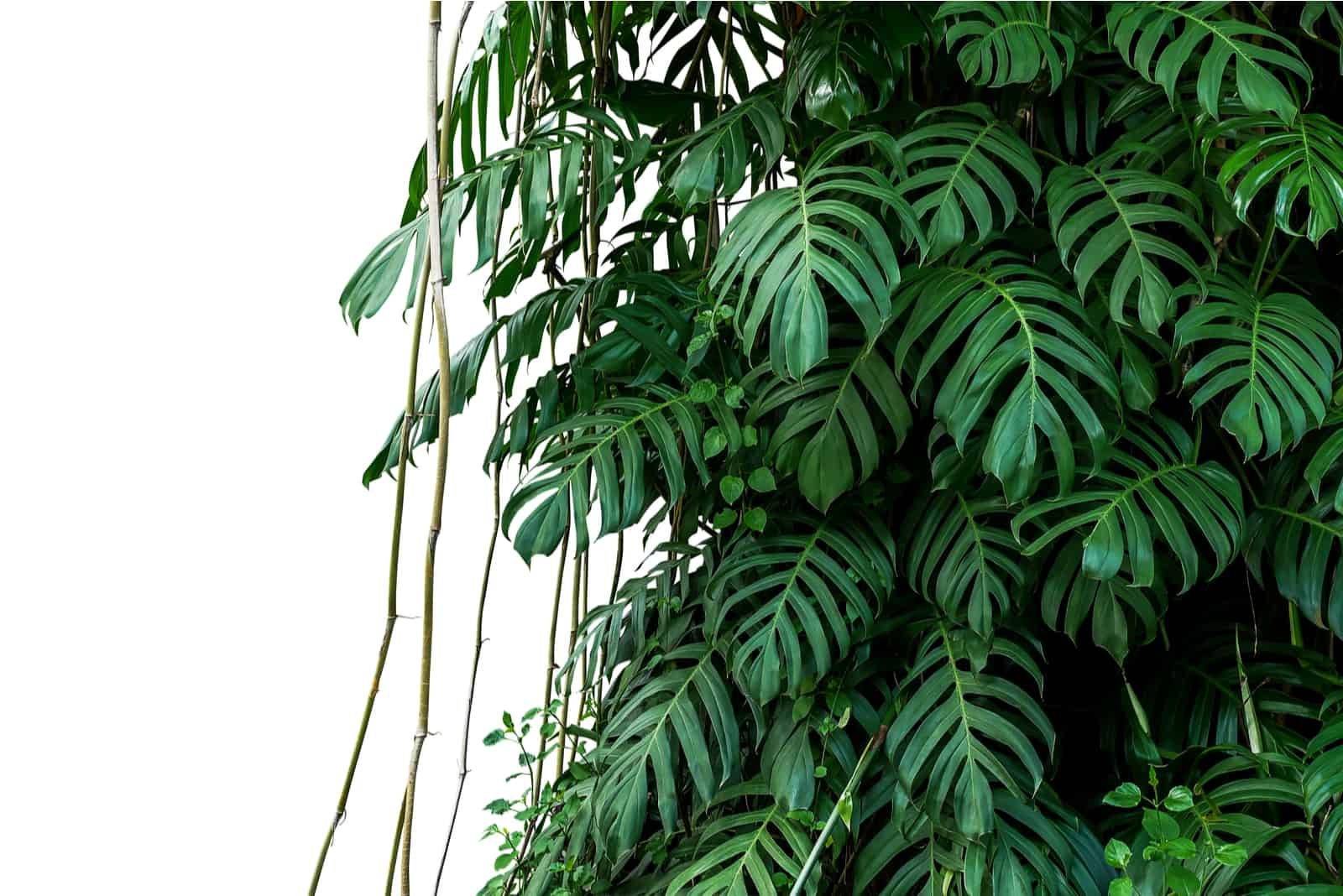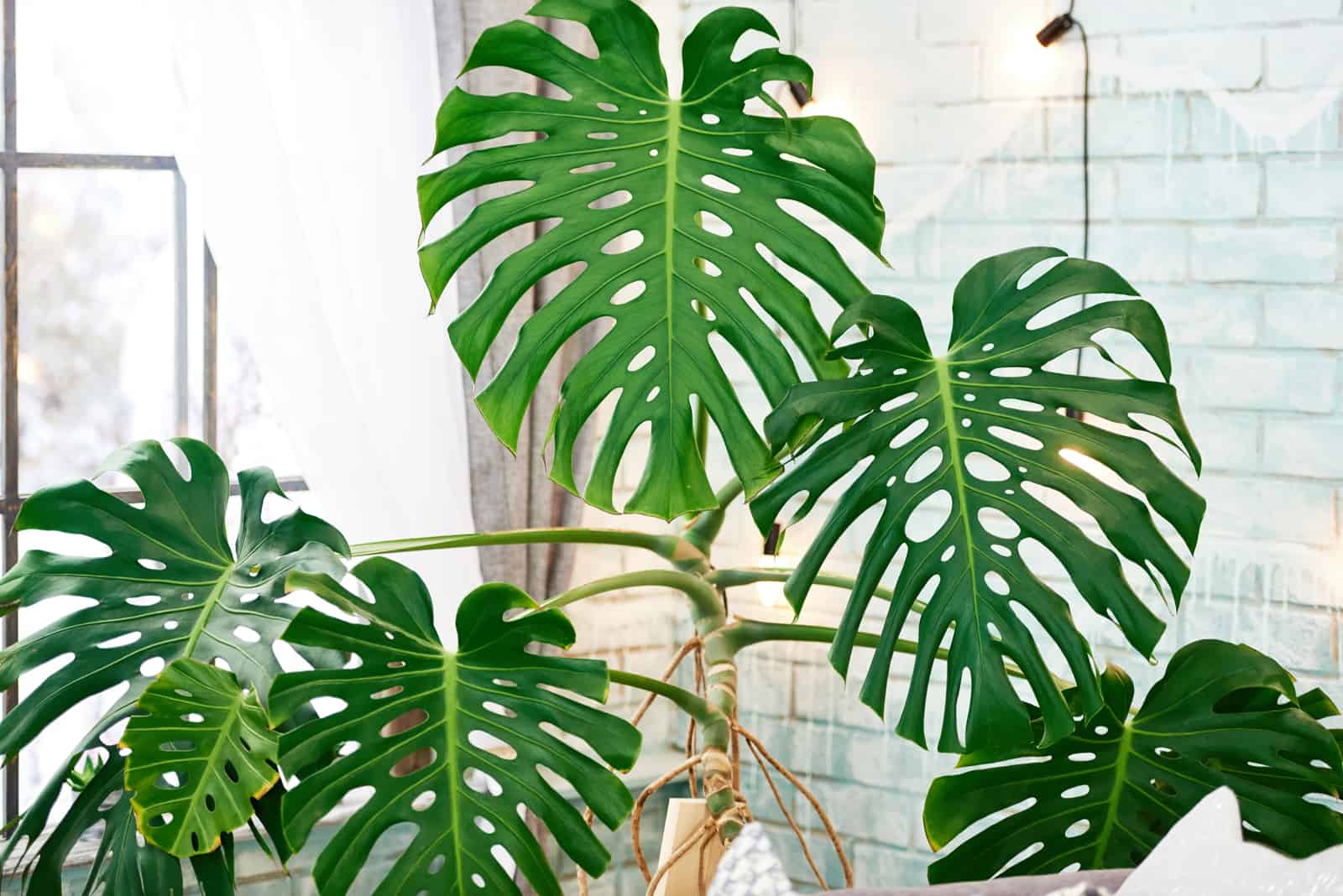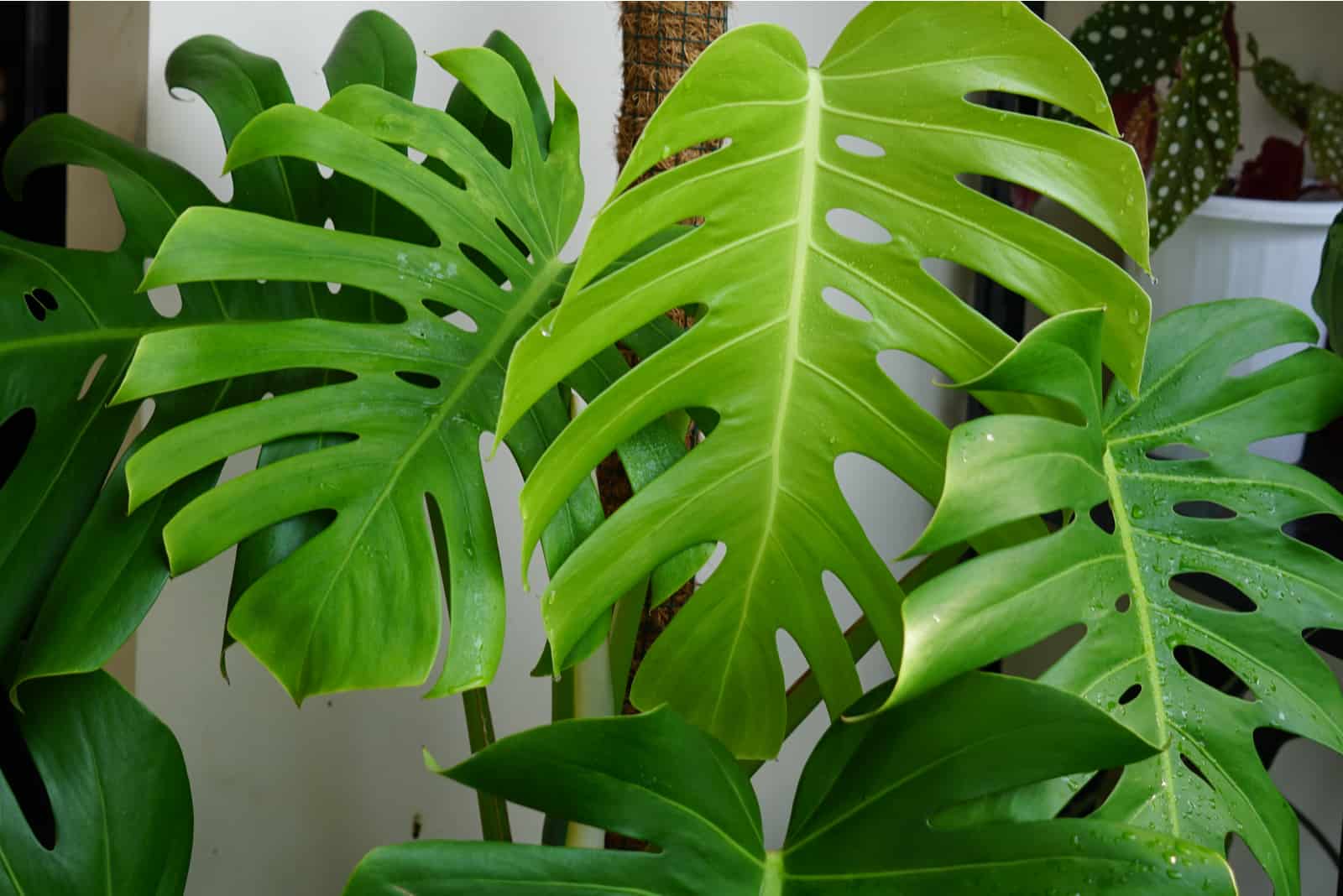The Philodendron Monstera is often mistaken for other plants due to its many names.
When I was shopping for a Philodendron Monstera plant of my own, I was unsure whether what I found was a Philodendron or a Monstera plant.
Later, while I was looking for a care guide, I saw many different names, including Monstera Deliciosa. I then realized that the Philodendron Monstera or Monstera deliciosa needs a specific approach in comparison to other similar plants.
I decided to make a guide of my own to clarify the common names, why they were given, and how to properly care for this plant.
And here it is! Everything you need to know about the plant in one place.
First, some basic info:
[table id=43 /]What Does A Philodendron Monstera Look Like?
The leaves of this Monstera plant look like they have been perfectly cut with scissors. Its fleshy, upright spike, known as a spadix, gives this plant a beautiful look.
The cuts of the leaves are egg-shaped and may vary in appearance, size, and number.
The leaves’ holes naturally develop, and are called fenestration.
These holes and veins on the leaves are crucial for the uptake of nutrients and moisture.
Monstera plants developed these holes to survive heavy rain and strong winds. The holes serve as weight relief, and allow raindrops to easily access the leaves.
The Monstera Deliciosa is also known for its edible fruit. The flowers of this Monstera plant have spathes that will eventually turn into delicious fruit.
It’s worth mentioning that these days many cultivars appear and the leaves are variegated.
What Is The Difference Between A Philodendron And A Monstera?
The main difference between Monsteras and Philos is in the taxonomy. Both plants come from different genera and, as such, shouldn’t be confused.
There are similarities in physical appearance, but they should always be separated as two different plants. That is why the Monstera Deliciosa is called Philodendron Monstera or Split-Leaf Philodendron.
This means the Philodendron Monstera is a Monstera plant, and we will treat it as such.
The Monstera also resembles a Peace Lily, and in my opinion, both would make a great addition to your home decor. The same goes for Monstera Deliciosa and Rhaphidophora tetrasperma.
Philodendron plants have similar problems as Monstera plants. They are often mistaken for pothos.
Confusion exists and should be cleared up.
Now let’s look at the Philodendron Monstera and everything it needs to thrive.
How To Grow A Philodendron Monstera
The growth of this house plant depends on four main conditions: lighting, temperature, humidity, and good potting soil.
Higher temperatures, higher humidity levels, bright indirect light, and peat-based potting mix are essential for the Swiss Cheese Plant.
Read on to find out how you can provide the best conditions possible to ensure the healthy growth of this plant.
Temperature Requirements
Monstera plants including Philodendron Monstera and Monstera Acuminata require higher temperatures because it is native to tropical climates.
It’s vital to keep the temperature between 45 to 80°F.
Although these houseplants can grow in lower temperatures, never let the temperature drop below 45°F to avoid any damage to the way the plant looks.
Heat increases moisture requirements, so keeping the plant away from heat sources is important.
This includes radiators and fireplaces.
The Philodendron Monstera is an indoor plant, so putting it in the right place will help it thrive.
Humidity Requirements
This plant is native to rainforests, so you should do your best to imitate high humidity conditions in your home.
Perfect humidity levels range between 55 to 60%.
Pay close attention to moisture levels to avoid any complications.
The moisture level in kitchens and bathrooms is higher, so either place would be an excellent home for this plant.
If the humidity level is lower than it should be, you can increase it using a humidifier.
Misting the large leaves is also important.
You can also increase moisture levels in the pot’s soil by using a pebble tray.
You can make a pebble tray by filling a tray with water, adding pebbles, and placing the pot over the top of the tray.
Keep the plant away from air conditioners and vents because they dry out the air and reduce humidity.
Does The Philodendron Monstera Need Sun?
Philodendron Monstera plants are sub-tropical plants.
The native habitat of the plant may suggest the need for more sunlight, however, it’s essential to remember that sub-tropical plants grow under the rainforest canopy, so they aren’t exposed to much direct sunlight.
Even though this Monstera plant grows in low light, it’s better to use bright indirect light so the plant can grow faster and healthier.
Place the plant close to a south-facing window for best results.
This way, the plant will get some direct sunlight during sunrise, which won’t harm it because it will only be exposed to indirect light for the rest of the day.
Low light will prevent the leaves from developing perforations.
Light Meter
If you want to ensure good lighting conditions for your Swiss Cheese Plant, you can use a light meter.
You can use an incident or reflected light meter, and the difference is that an incident light meter has a lumisphere, or a little white ball that shows the light level when exposed to light. On the other hand, reflected light meters are integrated into cameras to measure light.
The Split-Leaf Philodendron responds well to fluorescent light, so if you want to get one for your office, it will grow just fine!
Observe the plant, and if you notice any changes to the leaves be sure to check your light levels.
Potting Soil Requirements
Choosing the right potting soil mix is another essential part of caring for this plant. A potting mix based on peat is ideal.
Add extra perlite and peat moss to really help your plants thrive.
Choose well-draining soil. You can improve drainage if you use a pot that has drainage holes.
The required pH level is 5.5-6.5 (alkaline pH).
You can also add cactus or succulent mix.
How To Care For Your Monstera Deliciosa
Now that you know which conditions to ensure, let’s look at how to water a Split-Leaf Philodendron, the propagation methods, when to prune, when to report, and how to fertilize.
What is the best way to water a philodendron Monstera?
The best watering schedule for this indoor plant is when the potting soil dries at least two inches down (the upper layer has to be completely dry).
Use a watering can and pour water over the top of the soil.
If the potting soil is wet, wait until it dries at least two inches down before watering.
Be careful not to overwater as this could cause root rot and yellow leaves. On the other hand, underwatering your Monstera can also have bad effects on its health.
4 Tips For Watering
1. If you can’t decide whether the soil has had enough water, put your finger in the soil to inspect the moisture levels.
2. During summer, wait until the potting soil completely dries out to avoid accidental overwatering.
3. Water it less during winter and fall, and bear in mind that the need for nutrients provided by watering decreases because the plant doesn’t use as much energy during these months.
4. Water over the soil’s pot, and be sure to avoid watering the leaves.
The Swiss Cheese Plant doesn’t need much water compared to other house plants.
Stick to the watering schedule to avoid overwatering and ensure you give your Monstera Deliciosa plant all the nutrients it needs. Overwatering your Monstera can have fatal consequences.
How To Propagate A Swiss Cheese Plant
This Monstera plant can be propagated using a couple of methods like stem cuttings and air layering. However, you can’t propagate your Monstera without a node.
Let’s get into details.
Propagation By Stem Cutting
You’ll be delighted to know that you can propagate this plant! Let’s find out how!
• Take a clean and sterile knife, cut off a stem, and make sure it has a couple of nodes. Only take stems that have leaves on them as the plant will need those leaves for energy absorption in the new growth.
• Fill a jar with water and place the cuttings in it. You can either use a small container or a large glass jar filled with water.
• Choose somewhere with indirect light for the container or jar.
• Wait for between two to five weeks and then check the roots. If the roots are long enough (a few inches), you can replant.
Propagation By Air-Layering
Another way to propagate the Monstera Deliciosa is by air-layering.
Here’s how:
• Take some sphagnum moss and wrap the stem (the part with aerial roots and leaf axils).
• Use a piece of string and tie it around the stem.
• Put a plastic bag over it (make sure it has air vents).
New roots will be visible in a few months. At this point you can replant a new plant.
Pruning A Split-Leaf Philodendron
This plant doesn’t need much pruning, and you should only prune when dead or dry leaves appear.
If there is a need for pruning, make sure you use sterilized shears to prevent any potential bacteria from spreading.
How To Repot A Philodendron Monstera Plant
The best indicator to repot is the roots. If the roots poke out of the drainage holes, it’s time for repotting, so it may end up being more often than every other year.
Use a pot just a few inches bigger than the old one when repotting.
Larger pots need more soil. If they are too big, the Swiss Cheese Plant’s roots will have too much soil surrounding them. The more soil, the higher the moisture level, which leads to root rot. The Philodendron Monstera is known as a fast grower. It needs to be repotted more often compared to other houseplants like the calathea.
When repotting, water the plant the day before. Take the plant out using your hands and gently shake off the roots. Leave half of the soil on the roots and place them in fresh potting soil. Press the soil down a little bit to prevent air spaces.
Fertilizing
The Philodendron Monstera needs to be fertilized approximately once every two months.
The fertilizer should be enriched with calcium, potassium, phosphorus, magnesium, and nitrogen.
It’s best to use liquid plant food for fertilization.
Liquid plant food is better due to its slow release. The Monstera plant doesn’t need much fertilization, so you don’t need to use slow-release pellets.
Slow-release pellets are more commonly used for plants that need more regular fertilization.
If you add too much fertilizer to the tips of the leaves, they will turn brown.
You should follow the instructions on the fertilizer and stick to the fertilization schedule. This will accelerate growth and help your Monstera Deliciosa plant thrive.
Common Issues
There are several specific issues that may occur with the Monstera Deliciosa. By observing its roots and leaves, you will be able to recognize them.
Root Rot
Overwatering is the main cause of root rot.
First, take the Monstera plant out of the pot to inspect the roots. The roots will smell unpleasant and the soil will have a mushy appearance. If you spot these two signs, you might have overwatered your Monstera plant.
Overwatering will cause the Monstera plant to have wet soil, and makes it more susceptible to diseases that are mainly caused by pathogens.
Fungus is the most common pathogen that causes root rot because it decomposes the root tissue. It will consume the excess water and cause root rot.
Root rot is one of the reasons it’s so important to pay close attention to the pot size and choose a pot with drainage holes.
The Swiss Cheese Plant won’t be able to absorb the nutrients it needs as the extra soil retains more water.
How To Remove Root Rot
You can remove root rot by following these steps:
• Take your Monstera plant out of the pot so you can see any changes in the root system.
• Prepare pruners or scissors by sterilizing them. Sterilization will prevent the spreading of the disease to other parts of the plant. If the roots of your Monstera plant are affected by fungi, I suggest you use a fungicide.
• Now you should remove any root which looks unhealthy. Use sterilized pruners or scissors and make sure to cut off all the dead roots. Sterilize the blades of the pruners or scissors before each cut to prevent spreading the disease to other parts of the root system.
• After you remove all the affected roots, make sure to wash the other roots thoroughly. This way, you’ll avoid temperature shock but also let the roots and the soil dry.
• After you remove the root rot, the next thing you should do is repotting.
Once you repot your Monstera, stick to the usual care routine.
Pests
Common pests that may affect the Monstera Deliciosa plant are aphids, spider mites, scales, and mealybugs.
Aphids can be found on stems and the undersides of leaves. These sap-sucking insects group together on the stem. You can tell aphids are present if you notice honeydew on your plant.
Spider mites will cause tiny spots on the leaves that can be either brown or white.
Scale insects look like shell bumps. Similar to Aphids, they mostly appear on the undersides of leaves.
Mealybugs cause cotton-like changes to the plant. These bugs are tiny and white, and are easily spotted.
Pest Removal
By using rubbing alcohol or dish soap, you can quickly get rid of mealybugs. Mix alcohol with dish soap and spray it over the mealy bugs.
You can remove Aphids using natural methods. Use neem oil or horticultural oils. If you are not sure if these will help, try insecticidal soap.
You can get rid of spider mites using a mixture of alcohol and water. Dip a cloth in the mixture and gently rub the leaves with it. You can also use dish soap by mixing it with water, dipping a cloth in it, and gently rubbing the leaves.
Use rubbing alcohol for the removal of scales. Dip either a soft sponge or swab in the rubbing alcohol and rub gently.
By using rubbing alcohol or dish soap, you can quickly get rid of mealybugs. Mix alcohol with dish soap and spray it over the mealy bugs.
Leaves Turn Yellow Or Drooping
Leaves usually turn yellow because of overwatering. If you’ve checked whether the plant is overwatered, and it isn’t, check the quality of the potting soil and drainage system.
A Swiss Cheese Plant plant will lose its leaves if the lighting, temperature, or humidity levels don’t meet its requirements. You may first notice yellow leaves, and if you don’t react, they could eventually droop.
If you notice that the edges of the leaves have become brown with yellow aureoles, your plant might have bacterial leaf spot disease. Leaves will droop when the germs reach the petioles.
If the Monstera leaves have some dark green blotches, your plant might be suffering from bacterial blight.
When the leaves are affected by bacteria, the best solution is to remove any contaminated leaves and stems.
Is The Philodendron Monstera Toxic To Cats?
The Monstera Deliciosa is toxic, so you should keep young children and pets away from the plant and far out of their reach. The plant’s toxicity is caused by calcium oxalate in the leaves.
The Monstera plant isn’t dangerous unless ingested. If you have young children and pets, they are likely unaware of the consequences and could consume the leaves without realizing the danger.
The consequences of ingesting the leaves are nausea and swelling of the throat, mouth, and lips.
I suggest you remove every fallen leaf from the floor as quickly as possible.
FAQs
Why is the philodendron Monstera a popular houseplant?
The Philodendron Monstera is a popular houseplant for many reasons. First, it is a low maintenance plant. It is also affordable compared to many other plants from this family. The plant can also be propagated, which means that you can make a lot of new Philodendron Monsteras by yourself. And last, but not least, this plant is definitely among the most beautiful houseplants.
What are the benefits of a Monstera?
The Philodendron Monstera is an air purifier and helps improve humidity conditions. Its fruit is very beneficial as it contains vitamins B and C, phosphorus, and proteins. Just a reminder that the fruit is edible only when fully ripe.
Wrapping Up
The Monstera Deliciosa is one of the most popular houseplants. I have both a Philodendron Monstera and Monstera Adansonii, and I would honestly recommend Monstera plants even to beginners.
Take good care of your Philodendron Monstera plant, as it’s worth it when you see your plant thrive.
Until next time!

